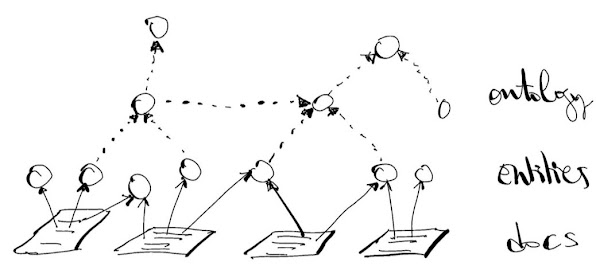Knowledge Representation Approach
Knowledge representation is simply organizing knowledge related to some area of knowledge into some physical form. A knowledge representation provides an explanation of or description of the nature and structure of something.
There are a number of different approaches that a knowledge representation might take, each approach having a different level of expressivity and reasoning capability. These different knowledge representation approaches form a spectrum. The following is a graphic which shows the expressivity and reasoning capability of different knowledge representation approaches:
- Name authority: A name authority provides what amounts to a dictionary or list which amounts to a flat inventory of terms with no relations expressed between the terms. This can be thought of as a controlled vocabulary.
- Thesaurus: A thesaurus provides a dictionary similar to a name authority but then also adds information about the relations between the list of terms enabling a user to do things like distinguish broader terms from narrower terms.
- Taxonomy: A taxonomy tends to provide descriptions and a limited amount of structure generally in the form of one hierarchy into which some list of terms is categorized.. A taxonomy is a tree of categories of things with only one type of relation expressed so terms appear in only one location in a taxonomy. A creator of a taxonomy creates concepts, creates coherent definitions for those concepts, and puts concepts into “buckets” or categories.
- Ontology: An ontology tends to provide descriptions and multiple structures and therefore tends to have more than one hierarchy into which terms are categorized. So, an ontology can be thought of as a set of taxonomies for explicitly differentiate types of relations or associations between terms. An ontology is less like a tree and more like a graph (network theory).
- Theory: A theory tends to provide all of the sorts of information provided by a name authority, thesaurus, taxonomy, and an ontology; but also provides information about restrictions, assertions, constraints, an other such information to provide a complete logical conceptualization.






Comments
Post a Comment